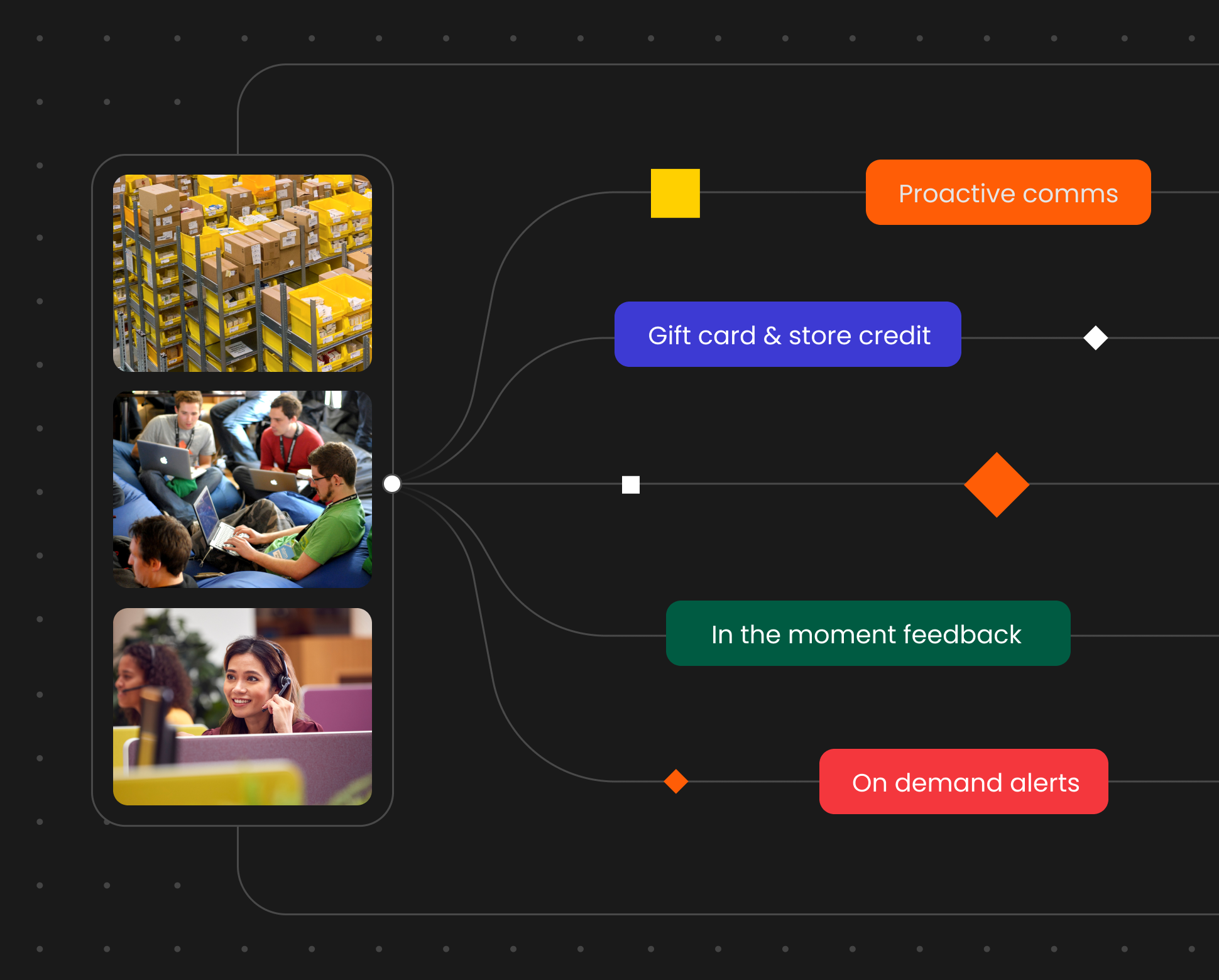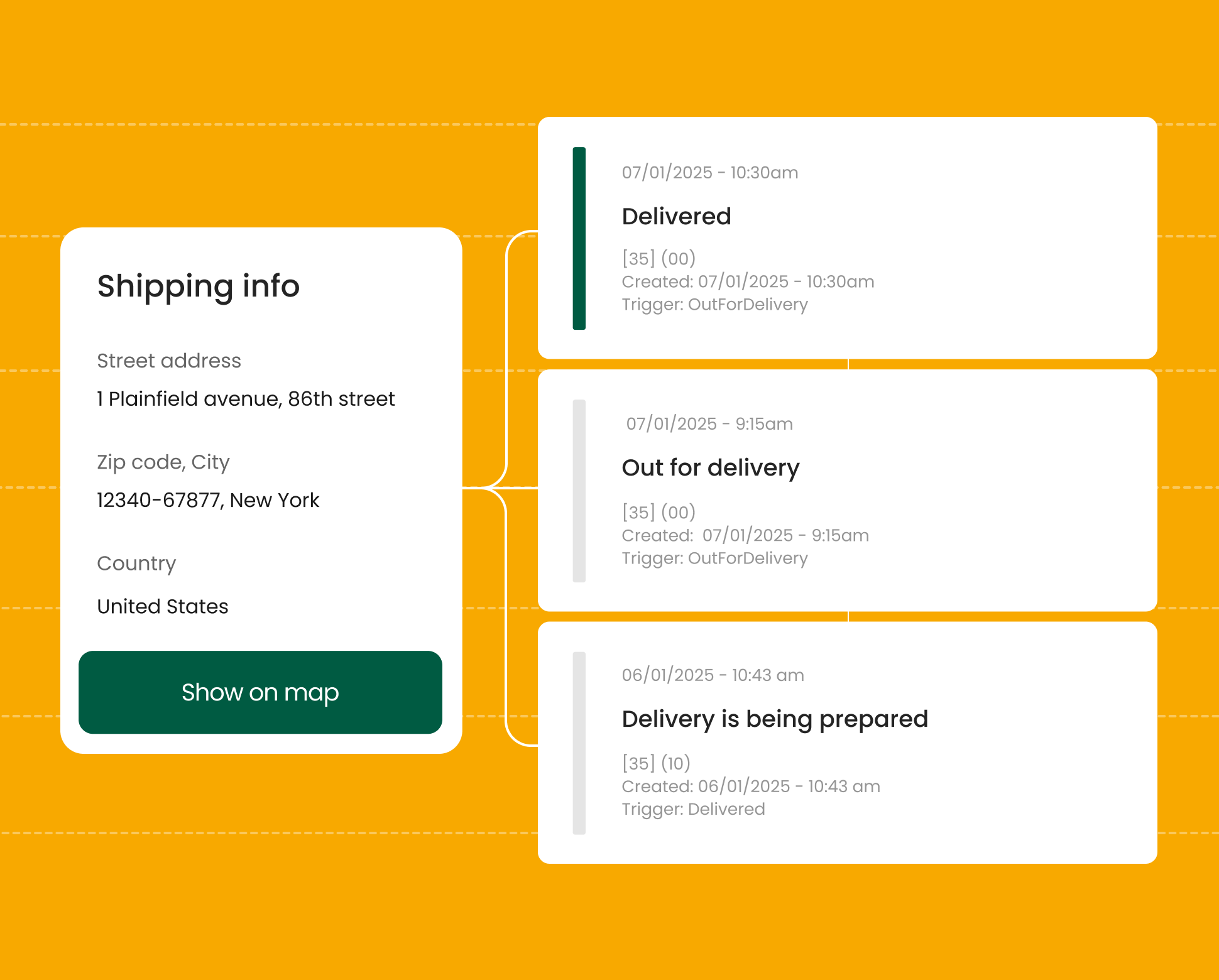6 Tips to level up your post-purchase communications

Today’s consumers expect seamless, instant communication from brands post-purchase. From emails to DMs on social media, your customers utilize multiple channels to make inquiries and customer service requests. Among the most popular? SMS.
SMS, or Short Message Service, has fast become the preferred channel for consumers wanting instantaneous updates on orders and deliveries. According to CleverTap, 48% of consumers are interested in receiving SMS for shipping updates, yet just 15% ranked retailers as the best industry for text updates.
In this guide, we explore how brands can put in place a streamlined text message delivery notification system that keeps your customers in the loop.
Why e-commerce merchants should consider using text message notifications post-purchase
Text message delivery notifications open up several benefits for brands and shoppers alike. These include the following.
Personalized post-purchase experiences
Brands can provide delivery updates via a dedicated page on their website or by directing customers to the tracking hub of their parcel carrier. But this can feel rather cold and impersonal to your customer — especially if you’re relying on either of these options in lieu of proactive communications.
When they’ve just placed an order, customers want reassurance that a parcel will soon arrive on their doorstep. A quick SMS sent at key milestones during the fulfillment and delivery process tells them that your brand has everything in hand. And by making the effort to communicate with customers directly, you add an extra layer of personalization to the customer experience.
High open rates
While email is the most common channel for delivery updates, the average consumer receives so many communications on a daily basis that an important message — such as informing them of a delivery delay — could easily get lost in their inbox. This is why the average email open rate sits at just 21.5%.
By comparison, consumers are incredibly responsive to SMS. With most consumers having a device nearby almost 24/7, a quick glance at the screen tells them everything they need to know about their order’s status. As a result, 97% of SMS are read within just 15 minutes of delivery. This ensures that customers stay engaged with your brand.
Instant updates
If your brand isn’t providing delivery alerts directly, you can’t guarantee the quality of the updates your customers are receiving. Parcel carriers, for example, often conceal delays or errors that may show them in a bad light. This results in a lack of transparency that reflects badly on your brand.
Using direct SMS provides your customers with instantaneous updates that are seen quickly, rather than an email that sits in an inbox until your customer gets around to checking it. This means the moment a customer places an order, they can receive an SMS confirming that their order has been processed and is on its way. This will heighten anticipation for their delivery.
Tips and examples of text message delivery notifications
If you’re planning to implement SMS delivery notifications, the following tips will come in handy.
1. Set up an SMS alert system
With hundreds of unique orders coming in each day, it simply isn’t possible for businesses to send out SMS alerts manually and keep track of shipping and delivery milestones. Instead, consider subscribing to an SMS alert system that allows you to send multiple messages at the same time to different customers.
SMS alert systems can be integrated with other systems, such as your e-commerce platform or shipping carrier, to ensure automated updates. This saves valuable time and takes pressure off your customer care team.
2. Make sure your system is compliant
SMS for marketing and informational purposes is highly regulated to protect customers from unsolicited messages or data breaches. The Telephone Consumer Protection Act (TCPA) and CAN-SPAM Act both govern how businesses can interact with consumers using SMS.
While order and delivery updates are generally exempt from spam rules because they belong to existing customer relationships, it’s still important to get an opt-in from your customers when they place an order. May particularly close attention if you want to share information regarding promotions or new products.
The easiest option is to provide a tick box at the checkout that states what kinds of communications you wish to send to customers. It’s a good idea to separate text message delivery updates from promotional messages so that customers have the option to opt into either or both message types.
3. Send multiple updates once an order has been placed
Many brands worry that sending too many updates may negatively impact the post-purchase experience. But this doesn’t consider how much anxiety customers can feel after placing an order. Waiting to send an SMS until an order has been dispatched for delivery leaves days until a customer receives a communication from you; in the meantime, they’re left in the dark as to where their order is.
Your business should aim to send SMS alerts at these milestones:
• When an order is placed.
• During order fulfilment.
• Upon an order being shipped.
• When an order is out of delivery.
4. Make it brand-centric
SMS might have a character limit of 160. But you should still make an effort to inject your brand’s personality into your content. Having navigated the shopping journey with your brand, customers have become familiar with your unique identity. Maintain a cohesive approach in your post-purchase communications to increase brand trust. This helps you to provide a seamless customer experience from ordering to delivery.
5. Add a CTA
Think about the customer journey as a series of breadcrumbs that lead shoppers into a deeper relationship with your brand. SMS notifications are a crucial touchpoint in the post-purchase experience. They keep customers in the loop throughout the delivery experience. But unless you’re taking this opportunity to direct customers to take other actions, the trail is going to run cold.
Add a CTA to your text message delivery notifications to prompt further behaviors that increase customer lifetime value. This includes signups to your newsletter, following your brand on social media, or asking them to leave a review for a product they’ve just purchased.
6. Stay on the lookout for future marketing opportunities
Once your customer has opted in to receive SMS messages, this opens up a world of possibilities to attract customers back to your brand for future purchases. Thanks to the almost 100% open rate of SMS, it’s a brilliant way to drive more traffic to your website at a cheaper cost than Google ads or sponsored social media posts.
Final words
Regular and consistent shipping updates are an integral part of offering customers a positive brand experience. Keep your customers informed about their order to leave a good impression. Follow our tips above to implement a text message delivery notification strategy that meets customer expectations.
At parcelLab, we help businesses provide personalized and branded post-purchase experiences across multiple touchpoints, including SMS. We can support your initiatives every step of the way — from designing your communication workflows to ensuring that your messages are delivered. Check out our platform to learn more.
We studied the delivery and returns experiences offered by the biggest apparel retailers in the U.S. and published the results in one handy tell-all guide.
You may also be interested in reading 6 ways to identify fake delivery notifications



